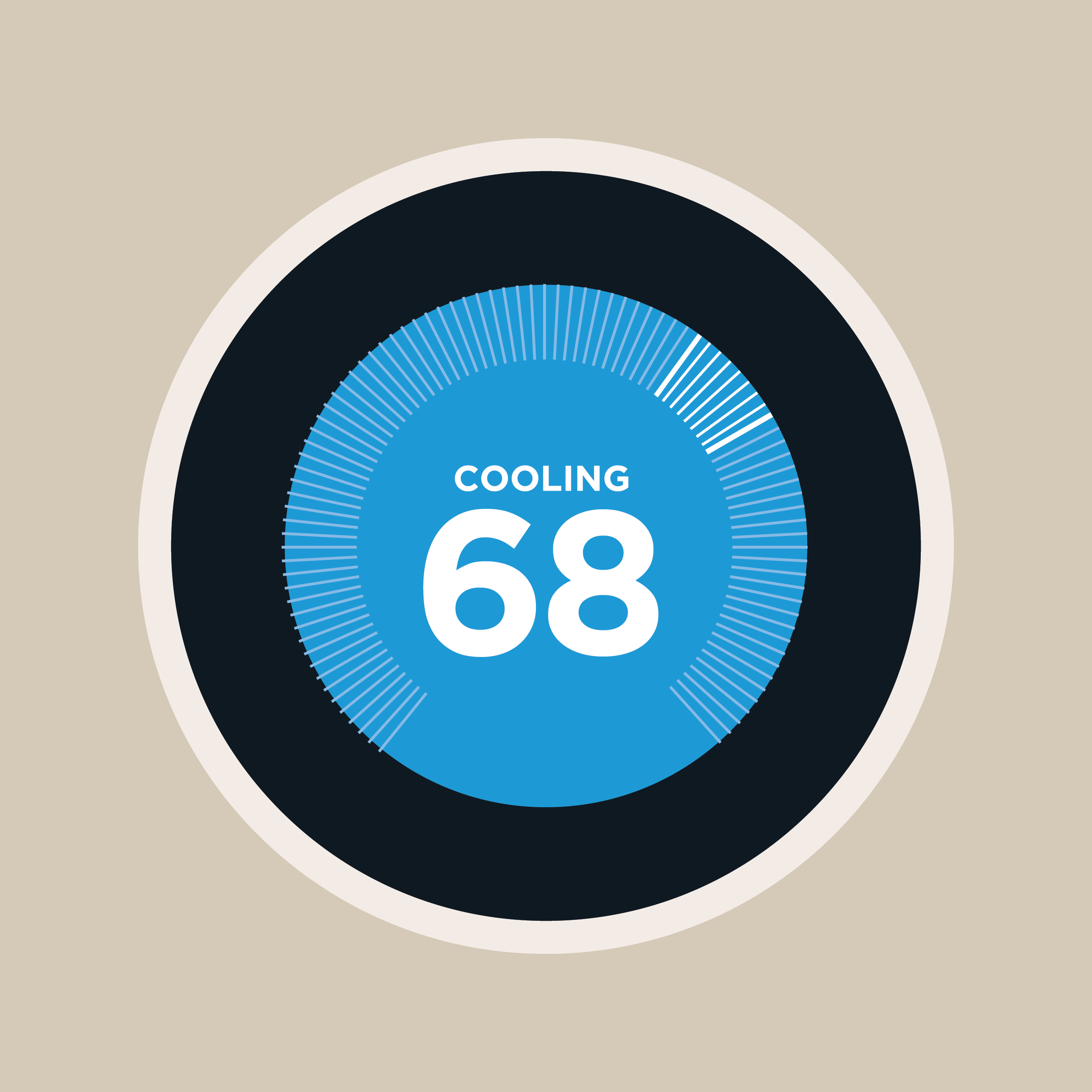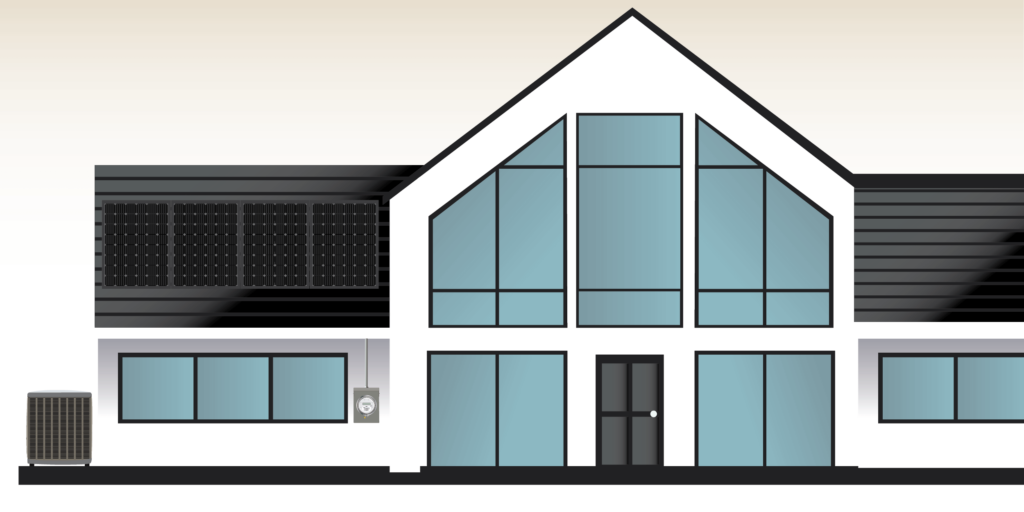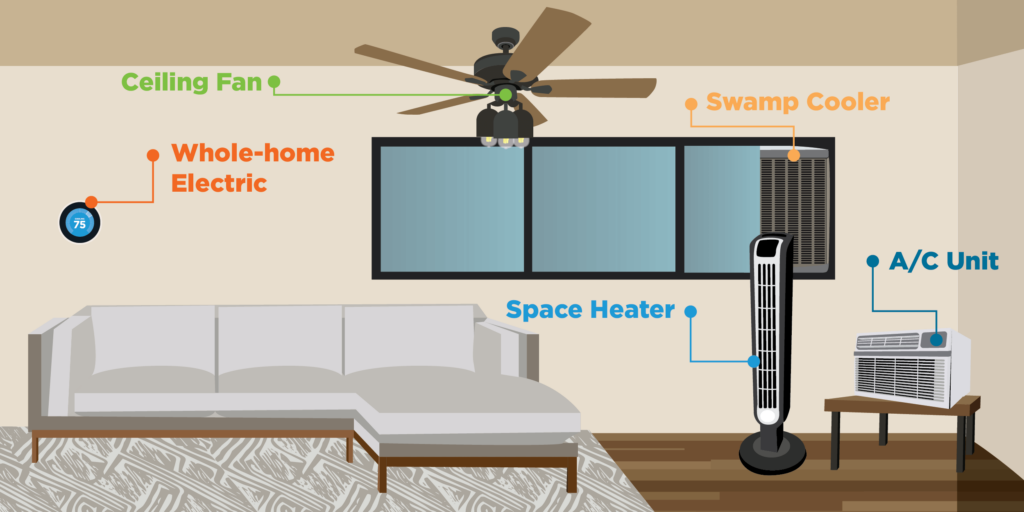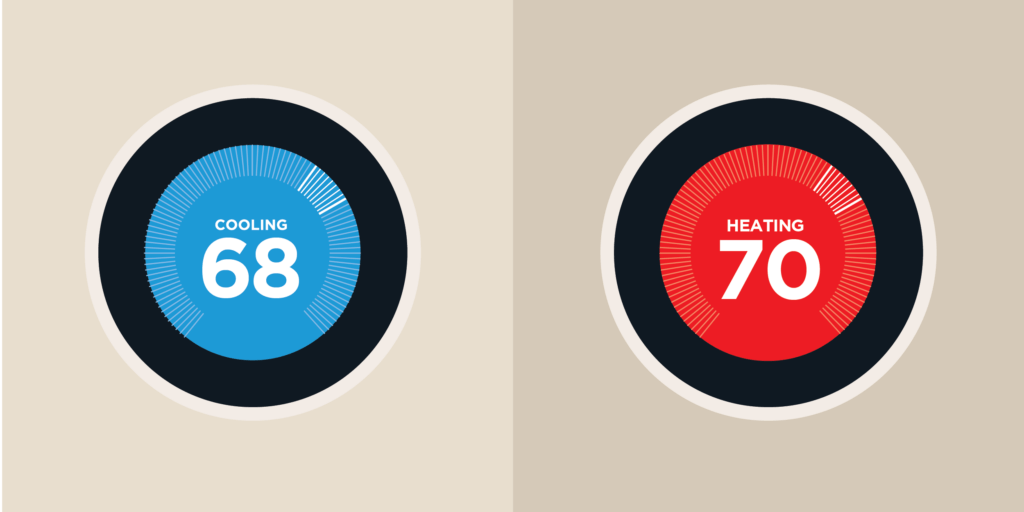
You have many opportunities to adjust how your home uses power—and these become particularly beneficial when you install a rooftop solar system. The more efficiently you use your energy, the more your solar investment will save you.
One of the best places to start is your HVAC system as your heating and cooling is one of your home’s biggest power users. Cranking the A/C in the hot summer months or turning up the heat during cold winters can lead to runaway utility bills—even with solar if your system was not designed to keep up with particularly high demand.
We don’t recommend making yourself or your family uncomfortable to save a couple of dollars per month. However, we do recommend learning more as there are optimized thermostat settings.
The short answer is to set the temperature for your A/C high and your heat low to minimize how often your HVAC system is turning off and on and the amount of work it has to do. But understanding the mechanisms behind this standard answer requires more discussion. The first step is to know where you’re starting.

Methods of Cooling and Heating Your Home
Determining how to ensure your HVAC system uses less power begins with evaluating the different ways to control the temperature in your home. Your home’s heating and cooling may include these appliances:
- Central air conditioning (A/C)
- Window or roof-mounted swamp coolers
- Stand-alone or ceiling fans
- Whole-home electric or natural gas heating systems
- Electric fireplaces
- Individual space heaters
Each of these draw a different amount of electricity. For this article, we’ll frequently refer to an appliance’s watt demand or, in larger amounts, an appliance’s kWh or kilowatt hour.
Why Kilowatt Hours are Important
Many appliances list their wattage use as do solar panels. A single 250-watt solar panel will generate about 250 watts per hour with peak sunlight. However, most utility bills measure your home’s power usage in kilowatt hours. Kilowatt hours are important because they allow you to compare your appliance usage, your solar panel generation, and how all these components work together in comparison to your utility bill.
The basic equation to find your kWh from wattage—whether for generation or usage—is to multiply your appliance’s wattage by the number of hours you use it and then divide the total by 1,000.
Wattage X Time = kWh
1,000
For example, if your solar system consists of five 250-watt solar panels, you generate about 1250 watts per hour—or 1.25 kWh in an hour. If the panels generate this for four hours of peak sunshine in a day, your solar system generates 5 kWh during this time (however, a small portion of this energy may be lost to solar clipping).
By the same token, your fridge might use an average of about 200 watts per hour. Running all day, your refrigerator will use about 4,800 watts in a day—or 4.8 kWh of energy in 24 hours. With the right rooftop configuration of solar panels, you can generate more than enough to power most, if not all, of your home’s energy needs.
Bear in mind the terminology can get a little confusing. Watts per hour, watt hours, and kilowatt hours all have certain meanings, depending on the context. If you need help figuring out your home’s average usage and the number of solar panels required to meet it, our experts at Blue Raven Solar provide a free savings estimate to help you understand these numbers.

Appliances and Their kWh Demand
Knowing how much electricity different heating or cooling methods require—as well as your other home appliances—makes it easy to know how much your solar system needs to generate to keep up. This can help you judge whether to decrease your HVAC use to save energy by turning the temperature up or down or switching methods.
Air Conditioning Options
Cooling options may range in power usage from 0.9 kWh to 4.1 kWh (900 watts per hour to 4,100 watts per hour).
Window-mounted units tend to use less power, but they also only cool a portion of your home. Central air cools your whole home and can consume between 3 and 3.5 kWh per hour on full blast while air source heat pumps use about 2 kWh per hour. Portable units may use over 4 kWh.
Fans are on the low end of energy use for cooling methods. Ceiling fans use the least energy, averaging only 0.03 kWh when on high, while box fans are on the high end, averaging 0.07 kWh when on high.
Heating Options
When heating your home, using an electric fireplace may run around 1.5 kWh. A space heater can also use a similar amount, depending on its size. However, just like window-mounted or portable A/C units these methods may only heat a portion of your home.
An electric furnace to heat your whole home generally uses about 26 kWh per day and an air source heat pump uses about 86 kWh per day. In contrast, a gas furnace requires only 600 watts of electricity to start up and your kWh would be determined by the number of times your heater turned on each day. This is why minimizing the number of times your heater turns on is one of the primary recommendations on decreasing HVAC energy consumption.
Determining the Best Options
The best heating or cooling method to use will depend on the outside temperature, your temperature tolerance, the size of your home, and a variety of other factors. However, understanding how the different methods stack up against each other allows you to make more informed decisions as you’re trying to decrease energy usage. It also makes it easier to decide on which tactics are right for you in various seasons of the year.

Seasonal Thermostat Tactics
Here we reach the questions we started with: What temperature should your thermostat be set to? Should it be set at the same temperature year round?
Energy.gov recommends setting your thermostat to 68-70 degrees Fahrenheit in the winter and turning up your settings to be warmer, setting the thermostat as high as is comfortable for you, in the summer—or whenever temperatures rise enough to need cooling. The goal is to minimize the difference between the outside and indoor temperatures, which requires your HVAC system or other heating/cooling methods to do less work.
The same Energy.gov resource also noted using a setback strategy, where you increase or decrease the temperature by 7-10 degrees when you’re away or sleeping, can save you as much as 10% on your energy consumption. In humid climates, using humidity control can help reduce the work your cooling system needs to do as well.
How Difficult is it to Optimize Your Thermostat Settings?
It might sound like we’re recommending you continually watch and adjust your thermostat. This is both cumbersome and time-consuming, and at Blue Raven Solar we are all about efficient energy savings.
This is why every Blue Raven Solar system includes a smart thermostat installation. With a smart thermostat, you have the option to customize your heating and cooling settings without physically turning the dial. A smart thermostat includes a range of options including digital touchscreens, mobile app access, programmable schedules, and integration with your voice assistant devices like Amazon Echo or Google Home.
These devices combine physical thermostat sensing, data processing, and internet-connected efficiency to bring cutting-edge comfort to your home.
How Much Do Your Thermostat Settings Affect Savings?
The level of your thermostat has a high impact on your power consumption. According to the U.S. Energy Information Administration, the average U.S. residential utility customer uses around 10,632 kWh in a year. Of this total amount, the average U.S. household uses 3,784 kWh annually for heating and around 3,084 kWh for cooling—or nearly 65% of a house’s annual average usage!
Any saving on your monthly electricity usage is a reduction of the electricity demand on your solar system. If you’re generating more power and using less electricity for heating and cooling, you’re magnifying your savings with efficient energy practices.
Our goal is to make your home’s energy generation and usage efficient to save you the most money. By combining renewable energy sources like solar panels with smart heating and cooling practices with your app-driven smart thermostat, you can rest comfortable—both temperature-wise and savings-wise.
If you think solar panels could fit your lifestyle and energy needs, reach out to our team for a free savings report to discuss your energy goals.



Sorry, the comment form is closed at this time.